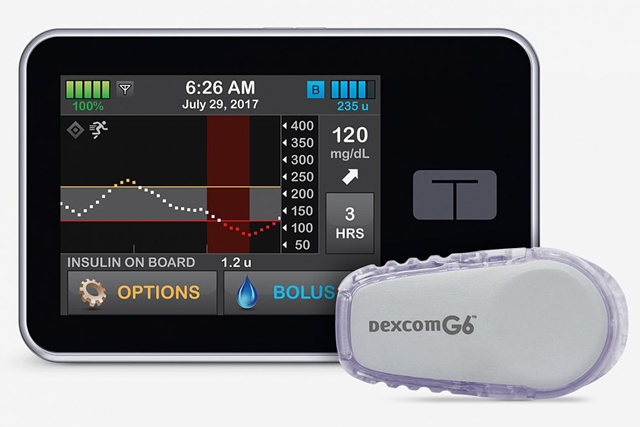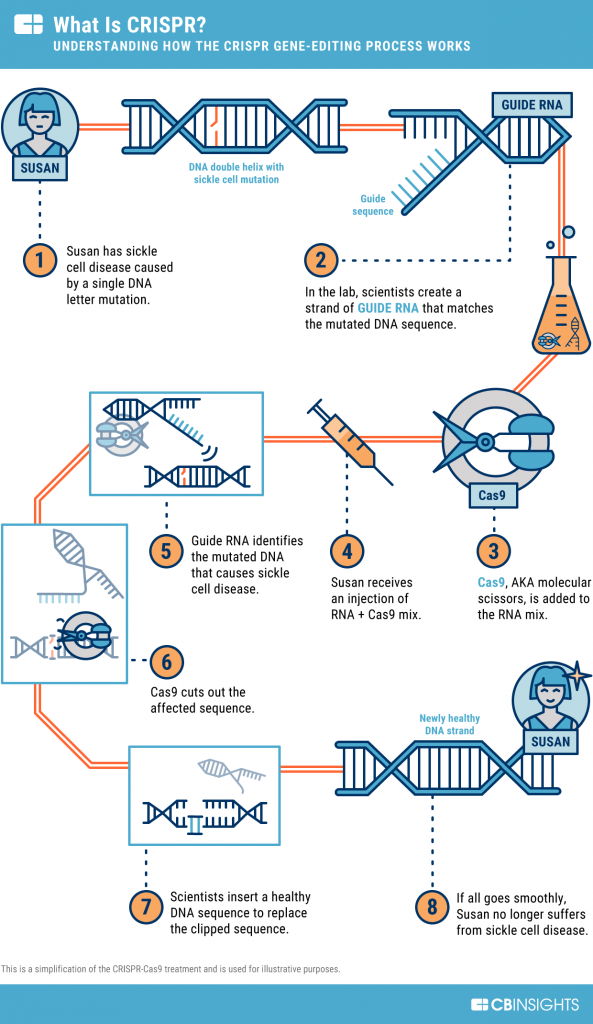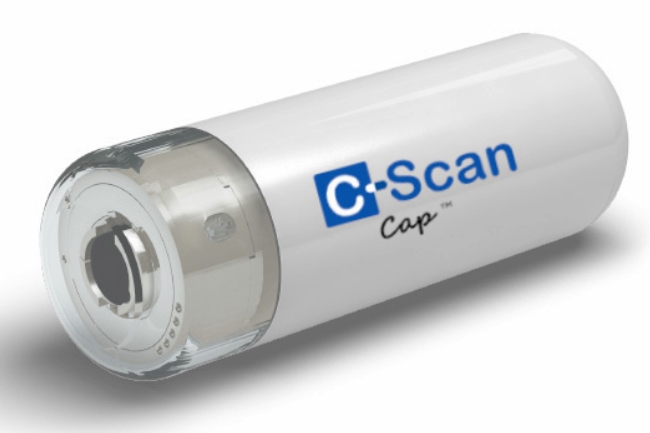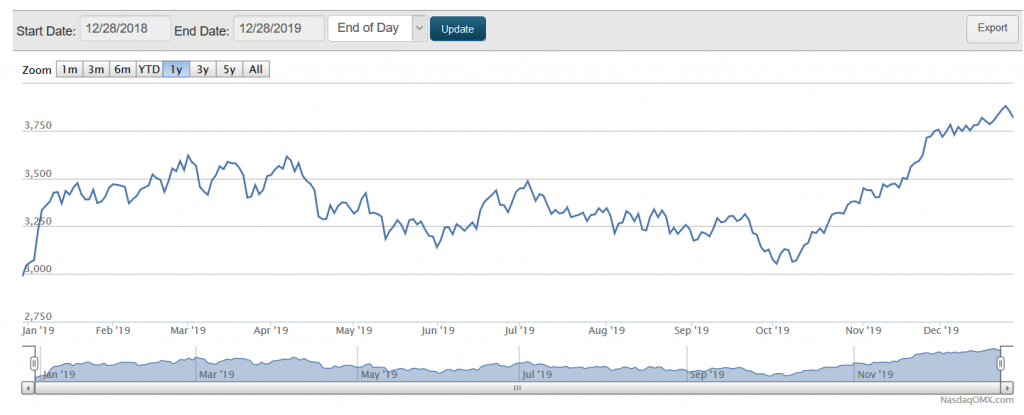Subscribe for email alerts
Donate to Science & Enterprise
|
By Alan, on January 4th, 2020 – Contributed content –
 (Rawpixel, Pixabay) 4 Jan. 2019. In a perfect world, we would be able to establish a business with minimal financial investment, and it would grow to prosper in the first few years. But the reality of business is far different. We’re instead being thrown into a financial crisis as a nation, not just as a business. Unless you’re already well established and had a low investment, you’re probably going to be feeling the crunch.
The truth is, most companies need a lot of money funded by business loans, and then ongoing loans to account for profit deficit. It’s not unusual for big brands to keep borrowing money to progress their business, let alone what a small business has to do to keep themselves afloat. The stress of the financial crunch can lead to crippling financial problems if they’re not addressed. Often there are avenues for a business to explore that will cut costs, boost sales, and pull you out of that financial crunch that you feel like you’re. Keep on reading to see what you can do.
Cut some of your costs
Cutting costs is so important considering the financial and economic climate of the nation at the minute. The costs of trading have never been higher, and the ability to secure sales has never been harder. So small businesses can’t afford to keep making big purchases. But there’s also the issue of needing to rely on specific components that help to make your business function.
One that has always been a money drainer for many companies is the fleet management side of things. You’ll have a fleet if you’re a business that transports goods from one place to another. The expense of doing so can be extortionate, but you can save by renting your commercial fleet rather than buying it. The maintenance and the cost of buying are then taken out of your hands, saving you money each month.
Another cost to cut is your outsourcing. Outsourcing takes up a large chunk of nearly every small business when often processes can be done in house. For example, certain marketing techniques such as PPC and Adwords are usually managed by an outsourced company for small businesses, however, it’s so easy to do yourself from the comfort of your own office.
Effective marketing
Keeping along the lines of marketing, effective marketing is a sure-fire way to boost your companies sales, therefore easing the pressure of the financial crunch. One effective method that’s lost on small businesses is TV advertising. It’s often a long and daunting process, which puts many companies off. But TV advertising is a direct marketing technique that’s guaranteed to make you sales.
As long as you create an ad that’s going to appeal to people, is interesting and funny and steers away from anything that might irritate viewers, it’s impossible not to make some money from the advert. There are tons of professional companies that can help you to come up with an advert that brings your products and brand to life.
Editor’s note: The opinions in this post are the contributor’s and not those of Science & Enterprise.
* * *
By Alan, on January 3rd, 2020  (Gordon Johnson, Pixabay) 3 Jan. 2019. An implanted device that stimulates areas of the brain associated with seizures can detect other neurological diseases in people with epilepsy. A team from University of Alabama in Birmingham reported its findings last month in the journal Epilepsy and Behavior (paid subscription required).
Researchers led by Birmingham neurology professor Sandipan Pati are seeking better methods for treating brain disorders that occur in people with epilepsy, but are often difficult to detect. Epilepsy is a neurological disorder where nerve cell activity in the brain is disturbed, causing seizures with symptoms ranging from blank stares to tingling sensations to loss of consciousness. World Health Organization estimates some 50 million people worldwide have epilepsy, where in many cultures people with the condition face stigma and discrimination.
The authors note that an unmet need of people with epilepsy is the occurrence of other neuropsychiatric conditions, such as anxiety, depression, and psychosis. “Treating these patients can be challenging,” says Pati in a university statement, “and one reason for this is that sometime seizures can mimic anxiety and panic attacks, or psychosis.” The team investigated data from an implanted device as a tool for detecting these additional disorders.
The researchers studied the records of 21 individuals with epilepsy resistant to conventional drugs, who have a Responsive Neurostimulator System device surgically implanted in their brains. The device is made by NeuroPace Inc. in Mountain View, California that detects impending signals of a seizure, then sends electronic impulses to two areas of the brain associated with the onset of seizures. Patients can also start the device manually when they sense the onset of a seizure. The Responsive Neurostimulator System records brain activity during these sessions, with the data downloaded to an external system, such as a doctor’s laptop, for further analysis.
Pati and colleagues reanalyzed the records of the 21 individuals, particularly the electronic signals data collected by the Responsive Neurostimulator Systems. Their analysis revealed five of the individuals — nearly one in four of the total — showed symptoms of other neuropsychiatric conditions, such as panic attacks and psychosis. The devices also indicated cases of conversion disorder, blindness or paralysis not explained by conventional medical evaluations, and somatic disorders, where patients focus intensely on pain or fatigue, causing emotional distress.
The five individuals in the study found with these other neuropsychiatric conditions received drug treatment, cognitive behavioral therapy, or counseling to address the issues revealed by the implanted devices, and according to the authors, saw improvements in their conditions.
The results suggest that these neurostimulation devices can provide actionable evidence for physicians treating people with epilepsy that was not previously available. “Seizure-induced anxiety or psychosis is treated with anti-seizure medications,” notes Pati, “while ‘pure’ psychosis is treated with anti-psychotic medications. This study will be attractive for patients, as anxiety or depression is a common problem in epilepsy, and patients get frustrated as they think we are always focused on treating seizures and not depression.”
More from Science & Enterprise:
* * *
By Alan, on January 3rd, 2020  (Tim Mossholder, Pexels.com) 3 Jan. 2019. An analysis of supply-chain interactions by businesses in the U.S. shows many more areas of the country create better products and processes than previously believed. Economists from Pennsylvania State University in University Park reported their findings last month in the journal Research Policy.
The team of rural economists Stephan Goetz and Yicheol Han are seeking better methods for defining and measuring innovation in local communities and regions. Goetz, professor of agricultural and regional economics and director of the Northeast Regional Center for Rural Development at Penn State, says current methods that focus on patents and R&D spending are missing a lot of innovation in American society.
“The way we traditionally measure innovation is very narrow, and focuses primarily on new products or processes that result in a patent or involve R&D spending,” says Goetz in a university statement released through EureakAlert. “This overlooks another kind of innovation: the incremental improvements that businesses make to their products and processes as a result of information they obtain from outside their firm.”
Goetz and Han — formerly a postdoctoral researcher at Penn State, now with the Korea Rural Economic Institute — constructed a statistical index of innovation that incorporates improvements and upgrades in products and processes, as well as improvements in technology, logistics, management, and marketing. Ideas for these improvements and upgrades, say Goetz and Han, often come from outside the enterprise, particularly from suppliers or customers. Therefore, a key factor behind an innovative business, say the authors, is that company’s ability to interact with and listen to its supply chain.
The Penn State team developed the index from an input-output table, a statistical representation of the economy showing the flow of goods, services, and monetary compensation within or between industries. The researchers started with the input-output table offered by the Bureau of Economic Analysis, an agency of the U.S. Department of Commerce, from 2007. They chose 2007 to avoid the intense long-term disruption of the recession beginning in 2008, and focused on 381 industries producing intermediate goods, items produced and sold for resale or transformed into other finished goods.
Goetz and Han measured the extent of interaction in purchases of goods and services in these industries, where commercial dealings outside of their normal chains indicate more opportunity for new ideas. In addition, the team looked at the geographic distribution of those interactions, where close physical proximity of interactions often encourages innovation. For example, the authors cite data showing a high proportion of patents reference other patents filed by inventors in the same city.
The researchers constructed their latent innovation index and correlated its results against income growth and employment patterns across the country, down to individual counties. The results show, as expected, high rates of innovation in metropolitan areas and a strong correlation with patents filed. But the authors also found many pockets of innovation taking place in rural counties and in a wider range of industries, including so-called older manufacturing industries such as metals, food and beverage, and chemicals.
Goetz notes that “places like Silicon Valley, Seattle, and Boston are home to tech firms that are developing entirely new products and technologies. But at the same time many non-tech businesses also engage in innovative activity that is less obvious, but nonetheless moving their industries forward and, more importantly, keeping them competitive.”
The authors make their data set available on the Northeast Regional Center web site.
More from Science & Enterprise:
* * *
By Alan, on January 3rd, 2020 – Contributed content –
 (ktphotography, Pixabay) 3 Jan. 2019. When it comes to relocation, an office move can be much more stressful compared to a house move. You have to think about so much more than packing your boxes and booking a moving van: you need to consider business continuity and the costs of moving your business from one place to another.
The move from one office to another can be overwhelming, particularly if it’s your first time. You have to think about your employees and whether they can come with you, and you should consider custom printed shipping boxes to make identifying your belongings easy. The most important thing to think about is how you plan to make your move as efficient as possible.
Your business ideally needs to keep running in the process of this move, and if you have to down tools for a day, you need to give your clients plenty of notice in advance. With that in mind, let’s take a look at six ways you can make your office move a more efficient one.
Purge. Before you start packing those boxes, start thinking about purging the office of all of the things that you no longer need or use. There is no point in moving things from office to office that you don’t intend to use. Talk to your staff and ask them to dispose of any unneeded materials and office supplies before you get moving. This way, they get involved in the process and you’re not trying to handle it alone.
Delegate. Put the heads of each department in charge of running packing and desk shutdown for their area of the business. So, IT employees need to put away IT equipment, admin staff can handle the files and changing the utility providers, etc. Delegation is important for the success of your move, making it far simpler.
Code. A color coded system in tagging the content of your office can help. So, if you have electric equipment going to office A, then tag them as blue with a blue sticker on the boxes so that the moving team can identify what goes where. This can maximize efficiency and organization.
Timeline. Before you start moving things, identify your timeline and your budget. You need to know how long it will take you to get from A to B and whether you have prioritized the key tasks that will help you to stay organized. Your moving budget will also help you to identify whether you can afford to do things in the timeline you want to do them in.
Plan. The staff in your office will benefit from knowing the diagram of the new office so that they know where they’ll be based in the new space. Create a map of the new office space to keep everyone in the loop.
Work. You should resume work as soon as possible after you move, so let your clients know when you plan to be back to business normality and you’ll find that they will be grateful to hear all about it.
* * *
By Alan, on January 2nd, 2020  (NIH.gov) 2 Jan. 2020. A biotechnology company developing inhaled drugs for respiratory diseases agreed to provide Johnson & Johnson with access to its technology for treating lung cancer. The deal is expected to bring Pulmatrix Inc. in Lexington, Massachusetts $9.2 million in the short term, with as much as $100 million if full licensing and all milestone conditions are met.
Pulmatrix develops inhaled medications to treat serious respiratory disorders, including asthma and COPD. The company’s technology, called iSperse — short for inhaled small particles easily respirable and emitted — creates dry particles that the company says overcome a serious problem with current dry-powder inhalers, namely the sticking of medication particles in the mouth and throat, which limits delivery of drugs into the lungs where they’re needed. The powder particles are smaller, denser, and milled to be more aerodynamic to avoid being deposited in the mouth or throat.
Among therapies in early clinical stages at Pulmatrix are inhaled treatments blocking the actions of specific kinases or enzymes that contribute to lung diseases. One of those therapy candidates, code-named PUR1800, is designed to limit kinases that lead to acute exacerbations of COPD, short for chronic obstructive pulmonary disease. COPD is a progressive respiratory disorder that makes it difficult to breathe, and causes coughing, wheezing, shortness of breath, and tightness in the chest. PUR1800, says Pulmatrix, blocks inflammation in the airways resistant to steroids, suppresses inflammation from infections, and treats structural changes in airways resulting from COPD.
Under the agreement, Johnson & Johnson’s lung cancer initiative is supporting Pulmatrix’s upcoming early-stage clinical trial of PUR1800 for COPD, providing an initial fee of $7.2 million, plus an additional $2 million upon completion of the study. The agreement gives Johnson & Johnson an option to license PUR1800 and other kinase inhibitors for treating lung cancer, which would make Pulmatrix eligible for up to $91 million in additional commercial and development milestone payments, as well as royalties on sales.
“In 2020, we anticipate clinical data from the first of these inhibitors in a disease area with significant unmet medical need,” says Ted Raad, CEO at Pulmatrix in a company statement. “We look forward to collaborating with the lung cancer initiative at Johnson & Johnson as we advance this important program.”
More from Science & Enterprise:
Disclosure: The author owns shares in Johnson & Johnson.
* * *
By Alan, on January 2nd, 2020  Artificial pancreas system (Tandem Diabetes Care) 2 Jan. 2020. A system for automatically measuring blood glucose levels and dispensing insulin for people with type 1 diabetes is authorized by the Food and Drug Administration. The system uses an insulin pump made by Tandem Diabetes Care and glucose monitor by Dexcom Inc., both in in San Diego, controlled by software based on research at University of Virginia in Charlottesville.
Type 1 diabetes is an inherited autoimmune disorder where islet cells, also known as beta cells, in the pancreas do not produce insulin. Type 1 diabetes is diagnosed primarily in children or young adults, where the immune system is tricked into attacking healthy cells and tissue as if they were foreign invaders, in this case, insulin-producing islet cells. From 5 to 10 percent of people diabetes have the type 1 form, estimated at 1.25 million in the U.S.
People with type 1 diabetes need to constantly test their blood to keep glucose or sugar levels in a safe range. Up to recently, those tests required testing a tiny blood sample from sticking a needle into a finger. More recently, glucose monitors attached to the skin came to market that constantly monitor blood glucose levels, along with insulin pumps that deliver the precise dose of insulin. These devices, however, still need human coordination and control to keep blood glucose levels within a safe range.
Missing from the overall system is a way to automatically control and coordinate both devices. The Center for Diabetes Technology at University of Virginia conducts research on analytics for understanding and managing diabetes, and with colleagues at Harvard University, developed algorithms for measuring blood glucose and calculating insulin requirements. Those algorithms were translated into software, licensed to the spin-off enterprise TypeZero Technologies in Charlottesville, for commercial development. In 2018, Dexcom acquired TypeZero Technologies, incorporating the software into Dexcom’s systems.
The complete closed-loop system combines the t:slim X2 insulin pump made by Tandem Diabetes Care with the Dexcom G6 integrated continuous glucose monitor, both managed by Control-IQ software from the original algorithms developed at University of Virginia. This so-called artificial pancreas uses signals from the glucose monitor to drive the timing and quantity of insulin released from the pump, without any action by the wearer.
“This is a new-generation interoperable automated glucose control system,” says Boris Kovatchev, Center for Diabetes Technology director in a university statement, “which allows seamless integration of a continuous glucose sensor, insulin pump, and a smart control algorithm.” Kovatchev is one of the team leaders that developed the original algorithms and software.
In a clinical trial published in the New England Journal of Medicine and reported by Science & Enterprise in October 2019, participants were randomly assigned to wear the closed-loop system or the sensor-augmented insulin pump. Results show participants wearing the closed loop system spend more hours per day in the safe-target range than sensor-augmented pump wearers. The percentage of safe-target time at night — midnight to 6:00 am — is also higher for closed-loop system participants. In addition, the percentage of time spent in the safe-target range increased during the six-month trial for closed-loop system wearers, while sensor-augmented pump wearers stayed the same.
FDA cleared the closed-loop system in mid-December, for people in the U.S. with type 1 diabetes needing fine-tuned insulin deliveries based on day-to-day needs, as well as personal history. The agency noted the device is the first closed-loop system, but also integrates devices from different manufacturers, a step FDA hopes leads to more interoperability in these systems.
More from Science & Enterprise:
* * *
By Alan, on December 31st, 2019  Click on image for full-size view (CB Insights) 31 Dec. 2019. Let’s take a look back at 2019, as the year comes to a close.
Since we cover the worlds of business and science, two domains that depend on quantitative evidence, we’ll start with some numbers. In 2019, through yesterday, Science & Enterprise drew more than 36,000 unique visitors totaling some 60,000 page views. About six of every 10 page views (59%), came from the U.S., with India, the U.K., Canada, and Korea providing 1,000 or more views of the site.
The most viewed page on Science & Enterprise is the site’s home page with nearly one in three page views, but looking at traffic on individual stories offers some insights into reader interests and preferences. Counting down the five most viewed individual stories posted in 2019 …
5. Infographic – What is Crispr? … 9 February 2019.
One hot topic we’ve covered almost from the beginning at Science & Enterprise is Crispr — clustered, regularly interspaced short palindromic repeats — a genome editing technique derived from bacterial defense systems. Our weekend infographic from CB Insights offers a good illustrated introduction to the technique (see image at top).
4. Stanford, Berkeley, MIT Top Undergrad Start-Up Ranking … 9 September 2019
Science & Enterprise often covers new businesses spun off from university research labs, so when Pitchbook released its annual ranking of campus start-ups, we were there. Pitchbook included universities worldwide in its tally, and highlighted women-led start-ups, which generated much of the story’s buzz.
3. Brain Stimulator Device Cleared for Depression, Insomnia … 28 March 2019
A continuing topic we follow on Science & Enterprise is medical devices to treat psychiatric and neurological disorders. This story about a system made by a company in Indiana and authorized by the Food and Drug Administration to treat depression, anxiety, and insomnia hit home with many readers.
2. FDA Releases Guidance on ALS Therapies … 23 September 2019
FDA also figured into our second most-read story, in this case new guidance to developers of new drugs and biologics for treating amyotrophic lateral sclerosis. ALS, also known as Lou Gehrig’s disease, is a progressive neurodegenerative disorder with no cures and few effective treatments for slowing progression of the disease. The document provides industry “with the FDA’s current scientific thinking so that effective treatments with a favorable benefit to risk profile can be most efficiently developed, studied, and ultimately made available to patients.”
1. CBD Shown Effective Against Staph, Strep Bacteria … 24 June 2019
Our most-viewed new story is from an academic/industry research team in Australia that tells how a synthetic cannabidiol, or CBD, compound is as effective as current antibiotics against a class of microbes that includes Staphyloccocus and Streptococcus bacteria. Antibiotic resistance is one of those stories we’ve covered at Science & Enterprise from our earliest days and is the focus of our special report last week.
The year 2020 marks our 10th year as a publication, and we’ll certainly have another look back when we reach that milestone. We’re hoping your new year is meaningful and fulfilling. Thank you for your continued readership.
* * *
By Alan, on December 30th, 2019 – Contributed content –
 (Helloquence, Unsplash) 30 Dec. 2019. Much like car insurance, there are a lot of myths and misinformation floating around about life insurance. Maybe avoid taking out life insurance as they assume it will be complicated to sort out or think it’s only useful for older people. In fact, anyone in a dangerous line of work or anyone with dependents should consider it. Here are some of the biggest myths about life insurance.
Myth: It’s expensive
The truth: One of the biggest misconceptions about life insurance is that it’s expensive. Most people severely overestimate the cost of the policy they would need. In fact, if you’re smart and shop around for a quote, you can find very affordable policies. Don’t just take the first policy you find and spend some time looking for the best price you can find.
Myth: There’s too much choice
The truth: There are a lot of different varieties of life insurance out there, but for most people the best choice is direct term life insurance, which is actually quite straightforward to organize. With this kind of insurance, you determine the amount of coverage and the timespan you’ll be protected for. As long as you pay your monthly premiums, if you die within the timespan, your chosen beneficiary will get the insurance payout. There are lots of tools online to help you research the best policy for you.
Myth: Young and healthy people don’t need it
The truth: If you can afford it, you’re better off buying a life insurance policy when you’re young and healthy, as a policy will cost less then. You’re more likely to develop health problems as you get older, so the price goes up the older you are. If you buy insurance when you don’t need it, you’ll get a better price than if you waited until you do need it.
Myth: You can’t get life insurance if you have health issues
The truth: Unless you have very severe health issues, you should be able to get term life insurance.
Some conditions, including arthritis, high cholesterol or diabetes, will mean that you will get a higher quote for your life insurance, but you will still be able to get a policy. Do some online research and shop around for the best price.
Myth: Single people don’t need it
The truth: There are lots of good reasons for those without a family to buy life insurance. If you have children in the future, hope to get married or having other relatives who rely on you for financial support, then a policy is a good idea. If nothing else, a life insurance payout can help to cover your funeral costs.
Life insurance could also be a help if you own a business or have co-signed debts. Life insurance could prevent your loved ones from becoming saddled with your debts if you die.
Myth: It’s better to set aside money in savings rather than buy life insurance
The truth: While it is of course financially savvy to save money for your retirement, a life insurance policy is an important part of any financial plan. If you can find an affordable life insurance policy, then you should be able to afford to pay for a life term policy and keep paying into your savings account at the same time.
You should prioritize life insurance and savings for later life over savings for things like vacations and shopping. Plan for your future.
Myth: Older people can’t get life insurance
The truth: In reality, even the over 60s can find term life insurance, unless you have a terminal illness. If you are older, it might be best to consider a shorter-term policy that will help your family with things like buying out a business partner or managing your estate after your death. While you should be able to find a policy that is suitable for you, do bear in mind that the cost of coverage will be higher if you are older than if you had taken out a policy when you were younger.
Older people looking for insurance could also consider final expense insurance, which offers a payout designed to help your family to pay off any final debts you leave behind and to cover the costs of burial expenses.
Myth: You don’t need life insurance if you’re a stay-at-home parent
The truth: Think about what would happen if you were to die. Who would take care of your children or your elderly parents? If you die leaving a spouse behind, they may need to hire help to care for the family. While they won’t be missing out on your salary, covering the costs of this care might be a struggle that life insurance would help to cover.
Myth: Just getting life insurance through your employer is enough
The truth: Getting some group life insurance through your work is definitely a worthwhile employer benefit. However, the payout from this type of insurance is usually quite low, often only twice your basic salary. This sounds alright, but is unlikely to be enough to properly provide for a young family.
You should also consider what would happen if you lost or changed your job. A policy through your work won’t move with you to a new job. You’re much safer taking out a personal policy of your own. This ensures that your family will be properly cared for, regardless of what happens at your workplace.
Life insurance should be an essential part of anyone’s financial plan. Nobody likes to think about what will happen after they die, but a proper insurance policy can protect your loved ones from being hit by funeral expenses or your debts. Use life insurance to give you peace of mind in knowing that your family will be provided for after you’re gone. No matter what age you are, what health conditions you may have, whether you’re married, single or a parent, or what kind of career you have, then there will be a suitable policy for to help your loved ones.
Editor’s note: The opinions in this post are the contributor’s and not those of Science & Enterprise.
* * *
By Alan, on December 30th, 2019  C-Scan capsule (Check-Cap Ltd.) 30 Dec. 2019. Results from a small-scale clinical trial show an ingested capsule to diagnose potential colon tumors is safe and feasible for most patients. Findings from the first pilot study of the technology in the U.S. were reported today by the capsule’s developer Check-Cap Ltd. in Isfiya, Israel.
Check-Cap is the creator of the C-Scan system with an ingestible capsule that captures images from inside the colon to find precancerous polyps, candidates for becoming full-fledged cancerous tumors. The company says its system is an alternative to conventional colonoscopies that require extensive preparation to empty the colon, sedation of many patients, and an invasive endoscope. And the Check-Cap system does not ask individuals to collect or ship stool samples, as required by some screening technologies.
Because of these obstacles and limitations, says the company, one-third of Americans and up to 60 percent of adults age 50 to 75 outside the U.S. avoid colon cancer screenings. Yet, colorectal cancer is preventable and treatable with early detection, notes Check-Cap. Today, 1.4 million cases of the disease worldwide are diagnosed each year, leading to 700,000 deaths, including 49,000 in the U.S.
The C-Scan system asks individuals to swallow a capsule with an imaging-contrast agent. The capsule contains a tiny device emitting X-rays and a radio-frequency transmitter. As the capsule travels through the colon, says Check-Cap, the device sends out small amounts of X-rays, since it only needs to capture data from very close to the capsule. X-rays are emitted from the capsule only when it’s moving, not when stationary.
Data from the capsule are then captured by collection units worn on the individual’s torso that track the capsule’s position until it’s naturally excreted after two or three days. Data from the collection units are then downloaded to the physician’s workstation. At the workstation, C-Scan system software creates two- and three-dimensional images of the colon from the data. The images highlight suspected polyps on the colon’s interior surface, and with algorithms recreate different 3-D views of the colon’s surface, including a simulated endoscope view, like that from a colonoscopy.
The clinical trial is a pilot test of the C-Scan system in the U.S., looking primarily at its safety and compliance by patients; the technology is already tested and cleared for use in Europe. The study team at New York University and the Mayo Clinic in Rochester, Minnesota enrolled 45 healthy adults age 40 to 80 to test the system, but also to undergo a colonoscopy to verify the results.
Of the 45 participants, 40 individuals took the C-Scan capsule and completed a questionnaire at the end of the study. Of these 40 individuals, 12 participants were not considered evaluable by the study team, “after factoring in technical and physiological dropouts and protocol violations.” The disqualifying factors were not disclosed.
None of the remaining 28 individuals reported any more than mild adverse reactions to the ingested capsule, and participants reported higher satisfaction with the C-Scan system than a colonoscopy. The detection rate of precancerous polyps by the capsules with this sample, says Check-Cap, was consistent with results of the colonoscopies, and similar to findings from earlier studies of the technology in Europe.
“The results of the study are promising, both in terms of safety and patient compliance of the procedure,” says Seth Gross, principal investigator of the study and gastroenterologist at NYU medical school, in a company statement. Gross is also a scientific adviser to Check-Cap. Alex Ovadia, CEO of Check-Cap adds, “Completing our first study in the U.S. constitutes an important milestone for our company as we work towards the initiation of a U.S. pivotal study in late 2020.”
More from Science & Enterprise:
* * *
By Alan, on December 28th, 2019  Nasdaq Biotechnology Index, 28 Dec. 2018 through 27 Dec. 2019. Click on image for full-size view (Nasdaq) 28 Dec. 2019. When we last checked in with the Nasdaq Biotechnology Index in mid-October, the NBI had fallen from its high point for the year about six months earlier to about the same level as early January 2019. Since October, however, the NBI rose steadily to a new high for the year, as shown in this weekend’s infographic.
NBI is an index of 223 biotech companies trading on the Nasdaq exchange, where many public technology companies of all kinds trade their shares. The year 2019 began with NBI in a slump, hovering just about 3,000. By March, the index rose 19 percent to 3,619 and bounced around that level through mid-April, then began a decline to 3,053, about where it began the year.
Beginning in October, however, NBI reversed course, rising continuously over the next three months. Yesterday, the index closed at 3,851, a gain of 807 points or 26.5 percent from 2 January. That year-long increase is not far behind the overall Nasdaq composite index that rose 35 percent from the beginning of 2019.
We noted in October a few hints that biotech company shares may take off, with the sector remaining a hot investment target for venture capital through the third quarter of 2019. We should see soon if venture investors continue that pattern in the fourth quarter of the year.
More from Science & Enterprise:
* * *
|
Welcome to Science & Enterprise Science and Enterprise is an online news service begun in 2010, created for researchers and business people interested in taking scientific knowledge to the marketplace.
On the site’s posts published six days a week, you find research discoveries destined to become new products and services, as well as news about finance, intellectual property, regulations, and employment.
|










 RSS - Posts
RSS - Posts
You must be logged in to post a comment.